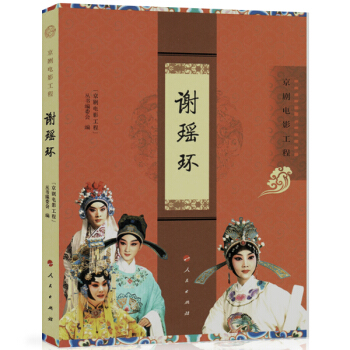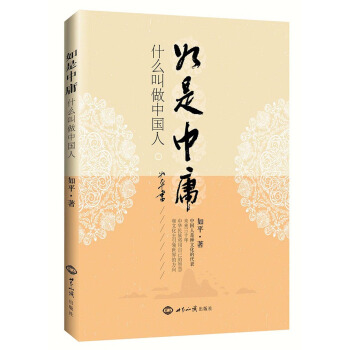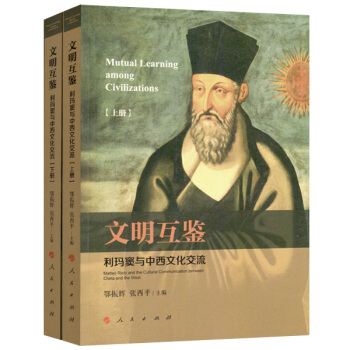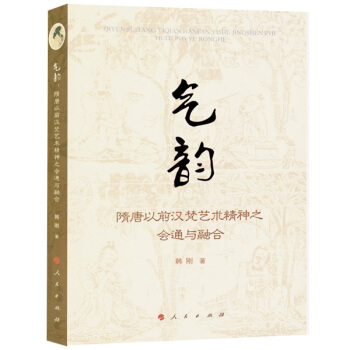![中国古建筑及其故事(英文)/中国传统文化经典系列 [Stories of Ancient Chinese Architecture]](https://pic.windowsfront.com/12063283/593e3df9N70af809d.jpg)

具体描述
编辑推荐
适读人群 :广大读者Shanghai Daily创始总编张慈贇先生为你讲述有关建筑的趣味故事,通过其文化背景,带你领略古建筑的独特魅力。
内容简介
在中国5000多年的历史长河中,劳动人民创造出独特的建筑结构、建筑技巧及建筑哲学,与西方建筑形成鲜明的对比。中国建筑之美无与伦比,而其精髓往往透过砖瓦,隐藏在历史故事之中。《中国古建筑及其故事》介绍了近50处中国历史建筑,其中包括“秦皇陵”、“岳阳楼”、“山西民居”等,为读者开启了通往中国古代王朝的历史之门。
Ancient Chinese architecture is an integral part of the rich and time-honored Chinese culture and an important component of the world architectural system. It is most famous for the Great Wall, but there are so much more. In 7,000 years, Chinese people developed unique architectural philosophies, structures and techniques that are very different from their counterparts in other places of the world. While Chinese architectural beauty is a feast for the eyes, the soul of ancient Chinese construction usually lies in the historical stories behind the walls. In this book, the authors will guide you as you knock on the gate of this ancient kingdom.
作者简介
张慈贇,国内资深英文媒体人,高级编辑,享受国务院政府特殊津贴。自1980年起,参与《中国日报》创办,曾任中国日报社常务副总编辑。主持《北京周末报》、《上海英文星报》的创办,均为首任总编辑。1996-2011年任上海市人民政府新闻办公室副主任,1999年创办《上海日报》社,任总编辑至2013年。现为中国翻译协会常务理事、上海翻译家协会副会长、《东方翻译》主编、上海外国语大学新闻传媒学院客座教授等。
主要译作:《聊斋志异》(外文出版社,1995,合译);《香港特别行政区基本法(草案)》(1988,合译);《翻译服务规范》(起草委员会成员/组长/英文定稿,中国标准化出版社,2004-2006);《中美关系史(1945-1949)》(资中筠著,美国哥大出版社,1991);《法国大革命的历史启示》(张芝联著,北京大学出版社,1989);《中国弹拨乐演奏》(马楠著,人民音乐出版社,1989);《中国教育法》(中译英,高教出版社,1986);《一个女记者的传奇》(英译中,新华出版社,1986,合译)等
Born in Shanghai in 1949, ZHANG Ciyun (Peter) graduated from Jilin Normal University, PRC with a major in English and later from Stanford University in the United States with a Master’s Degree in Journalism. Since 1980, he has worked for several newspapers and magazines in both Beijing and Shanghai. Also, he once served in the General Office of the Ministry of Communications as an interpreter and the Information Office of Shanghai Municipality as its Deputy General Director.
An acclaimed translator, reporter and editor, Mr. Zhang has helped bring into existence four English-language newspapers on the Chinese mainland, namely, China Daily, Beijing Weekend, Shanghai Star and Shanghai Daily. He is now the Editor-in-Chief Emeritus of Shanghai Daily and an executive council member of Translation Association of China. He has translated and co-translated more than a dozen books and a large amount of documents, including Strange Stories of Liao Zhai Studio and the English version of the Basic Law of the Hong Kong Special Administrative Region. He has also published many English and Chinese articles and theses in newspapers and magazines both in China and overseas.
内页插图
精彩书评
中国古建筑之美,可与唐诗争奇,可与元曲斗艳,乃中国传统文化之瑶琳,近年来愈来愈受到世界的瞩目。自去年“土司遗址”入选联合国教科文组织世界文化遗产后,中国已成为仅次于意大利的世界文化遗产第二大拥有国,而遗产中大多为古建筑,或宫阙楼阁,或陵墓城垣,或寺庙塔观,或园林祭坛,或古村民居,抑或石窟廊桥,她们各臻其美,编织成一幅姹紫嫣红的文明锦缎。建筑的嬗递演变,乃民族文化兴衰潮汐之影印,故古今治史学儒,皆以古建筑之风格造诣测量文化。可以这么说,中国古建筑之个性,正是中华民族传统艺术之个性、中华民族传统文化之个性。
但如今,成长与文化断层的现代人,对于中国古建筑这一包罗万象的艺术结构,缺乏应有的见地,自然难有爱惜传承之情,弃之于荒芜,甚至蓄意毁灭。更可笑者,拆了旧的,过个数载旧址上仿造个新的,盖风向所趋,凌轹往世,技艺粗劣不说,原先的秀美或壮伟荡然无存。欲保护传承,必先予以普及。这一点上,我觉得,梁公蕙仙做了一步,张慈赟先生亦做了一步。
有幸拜读部分书稿,诚然是部颇具新意的巨作。全书摘取中国古建筑之精髓,不仅介绍其历史价值和艺术价值,还以精美的建筑实物图、模拟矢量图等系统呈现古建筑的多维构架,生动呈现其营造法式、布局及构建步骤,将古典建筑学一些浅显的理论知识涵盖其中,十分难得。抚卷品香,故宫、华清池、莫高窟……一座座文化丰碑历历在目,折射着智慧的光辉。更为可贵的是,全书以英文一蹴而就,可见作者有意将焦点转移至传统建筑文化的重塑和对外输出。综观当下,以英文写就的普及中国古建的通识性读物,确实少见。这套图书,既可作青年人普及古建筑之学、用英语传播中国古建文学之用,亦可作外国人走进中国、了解中国古建的钥匙。
非常欣悦能够看到这本书的面世,由衷感谢上海译文出版社在这本书的策划和出版上所做的努力。中国古建筑纵横之承托、结构之联络、轮廓之钝锐、雕刻之装饰、空间之布局,细微处遍布智慧和美感,是世界建筑阆苑的瑰宝,每一个徜徉其间的游客都会惊异于她的绚烂和多姿。我热切期望读者能够以通过这套书,在课外阅读之余担起传承和传播的重任,保护文明成果,向世界展现中国古建筑的珍奇价值。我更热切盼望作为世界艺术藏库奇葩的中国古建筑,能在当下“世界建筑”范式中有一席之地。
——郭可(上海外国语大学新闻学院院长、教授)
中国传统文化是一种具有深远影响的理性的文化,这在作为文化载体的中国古建筑中可约窥一二。中国建筑历史悠久,散步辽阔,品式反复,艺术价值颇高,且数千年无蜕变掺杂之迹,保持着一以贯之的独特、纯粹的木构脉络,形成了一个严密、精确、理性的建筑系统,这在人类文明史上是极为罕见的。随着中国的迅速崛起,越来越多的国家和民族更希望了解包括中国古建筑在内的博大精深的中国文化。党的“十八大”后提出中华民族伟大复兴的“中国梦”的战略思想,正是根植于中华民族优秀的传统文化,体现的不仅是中国人民的道路自信、理论自信和制度自信,也是文化自信。我以为,上海译文出版社英文版“中国古建筑及其故事”的策划,正是一种文化觉醒后的文化自信和民族自信。
这部丛书所讲述的故事及其时代背景,在中国古代建筑极具代表性,无论汉阙时刻还是亭台楼阁,都是能展现中华民族聪明才智和高超技艺。此套丛书以英语为写作语言,以简洁凝练的笔触展示了中国古建筑的的丰富多彩,对弘扬中国传统文化具有重要意义。
从“引进来”到“走出去”,这本书的策划,让我们看到的不仅是一个文化企业的成长,更是一个民族的成长。像我们这样一个伟大而有着特别悠久的文化历史的民族,绝不能对自己的文化财富一知半解;像我们这样一个对世界文明史做出重大贡献的卓越的民族,绝不能仅将自己的文化财富束之高阁。这本书的出版,将会提供让世界对中国古建筑文化有了更全面的认识的契机。相信,这类有重大意义的文化图书以后会越来越多,中华民族必将以更加自信的姿态屹立于世界文化之林,为实践中华民族伟大复兴的“中国梦”而奋斗不息。
——尹承东(中央编译局副局长)
目录
故宫 The Palace Museum
Forbidden City — the dragon’s jewel
阿房宫 Epang Palace
Grandest palace remained a dream
布达拉宫 Potala Palace
The tallest ancient palace
大明宫 Daming Palace
Once world’s largest imperial palace
皇家坛庙 Imperial Temples
Imperial temples, altars dot Beijing
颐和园 Summer Palace
A best preserved imperial park
圆明园 Old Summer Palace
‘Versailles of East’ destroyed in war
华清池 Huaqing Pool
A pool where power and lust collide
秦皇陵 Mausoleum of Emperor Qin Shi Huang
Grand mausoleum of the First Qin Emperor
乾陵 Qianling Mausoleum
China’s only empress rests at Qianling Mausoleum
十三陵 The Ming Tombs
Thirteen emperors’ burial sites ‘masterpieces’
长城 The Great Wall
Wall part of complex defense network
西安城墙 The Xi’an City Wall
Defense included ingenious features
苏州城墙 The Suzhou City Wall
Wall very effective against invaders
登封观星台 Dengfeng Observatory
Tower used to make age’s best calendar
岳阳楼 Yueyang Tower
Yueyang tops among ancient towers
白马寺 White Horse Temple
Dream led to China’s first Buddhist temple
悬空寺 The Hanging Temple
Ancient architects produce spectacular mountain temple
五台山 Mount Wutai
Temple mount full of treasures
大昭寺 The Jokhang Temple
Tibet’s sacred monastery a living relic
应县木塔 The Sakyamuni Pagoda
Shanxi pagoda world’s oldest wood tower
大理三塔 Three Pagodas of Chongsheng Temple
Yunnan’s Buddhist gems offer quiet beauty
莫高窟 Mogao Grottoes
Spiritual, artistic and architectural wonders
化觉巷清真寺 The Great Mosque of Xi’an
Great Mosque stands the test of time
苏公塔礼拜寺 Emin Minaret Mosque
Worshippers, tourists revere this towering symbol of Islam
永乐宫 The Palace of Eternal Joy
Huge Taoist temple in Shanxi known for murals, Yuan styling
四合院 Beijing Courtyard House
Traditional dwellings designed with care
皖南民居 Southern Anhui Village Residences
Anhui’s rural gems of home building
石库门 Stone-Framed-Gate House
City lanes fuse Chinese, Western styles
窑洞 Cave House
Northern China’s cave houses last centuries
山西民居 Shanxi Courtyard House
Ancient Shanxi houses strong yet elaborate
客家民居 Hakka Walled Village
Walled villages built for families, defense
干栏式房屋 Stilt House
Building a home above land or water
骑楼 Arcade Building
Veranda-style buildings populate the south
开平碉楼 Kaiping Tower
Guangdong towers show Western influence
豫园 Yuyuan Garden
Classic garden a place of rare tranquility
苏州园林 Classic Gardens of Suzhou
Creating harmony between man and nature
岭南园林 Lingnan Gardens
Southern Chinese gardens open, natural
梁桥 Beam Bridge
Bridge building in China spans 6,000 years
拱桥 Arch Bridge
Arch bridges combine function and beauty
悬索桥 Suspension Bridge
Providing a connection through history
书院 Academy of Classic Learning
Academy designs display beauty of simplicity
会馆 Guild Hall
Ancient homes from home
曲阜孔子庙 Temple of Confucius, Qufu
Much thought went into philosopher’s temple
祠堂 Ancestral Temple
Homes for those no longer of this world
精彩书摘
长城 (chang cheng)
The Great Wall
One of the Eight Wonders of the World
The Great Wall is believed by many to be one of the greatest architectural masterpieces of mankind - as such, it is often called one of the Eight Wonders of the World.
People often credit Qin Shi Huang (259-210 BC), the First Emperor of a unified China, as the builder of the Great Wall. But con- struction of the wall actually started during the Spring and Autumn Period (770-476 BC) and the Warring States Period (476-221 BC), long before Qin Shi Huang's time, and it was rebuilt for several times in later dynasties.
However, the First Emperor did order additional construction and connection of various sections of defensive walls to form the Great Wall in northern China to fend off nomadic invaders. Unfortunately, most of the ancient walls built during the Qin time have disappeared and the existing wall we see today was mostly constructed during the Ming Dynasty (1368-1644).
Built with bricks, rammed earth, stone and wood, the Great Wall of the Ming Dynasty stretches more than 8,850 kilometers from Hushan in northeast China's Liaoning Province to Jiayuguan in northwest China's Gansu Province. Most Chinese people call it Wanli Changcheng, meaning literally "Ten Thousand Li Long Wall." Li is a traditional Chinese measure of distance, equaling 500 meters or half a kilometer.
The average height of the wall stands at 7.8 meters, but in some sections, it reaches 14 meters. Since most segments of the wall were built along mountains, the height of the wall rises in relatively level places and drops on steep ridges.
To ensure that two heavy, horse-drawn carts could rumble along side-by-side along the top of the wall, most portions of the Great Wall are quite wide, measuring an average of 6.5 meters at the bottom and 5.8 meters across the top of the wall.
While planning the route of the wall, the builders made the best use of advantageous topographic features, such as high mountains, steep cliffs and sharp river bends, to amplify the wall's function of defense and also to save labor and resources.
In earlier days, the walls were mainly built by filling wooden frames with earth and small stones. After the earth and stones were tamped solid, the wooden frames were removed.
During the Ming Dynasty, mass production of bricks and tiles became popular. As a result, the Ming Great Wall was mostly built with bricks of different sizes and shapes, depending on whether they were used for the wall body, stairs, battlements or gates.
The bricks made the wall stronger and last longer both in battles and in the fight against the elements.
……
前言/序言
Ancient Chinese architecture is a beautiful gem as well as an integral part of Chinese culture. It is also one of the three greatest architectural systems in the world, the other two being European and Arabic architecture.
As Liang Sicheng (1901-1972), a renowned Chinese architect and “father of modern Chinese architecture,” once pointed out that the architecture of China is as old as Chinese civilization. Some archaeological discoveries indicate that Chinese people began to develop a unique construction style as early as more than 7,000 years ago.
During the following centuries, Chinese artisans, builders and architects had invented a great number of ingenious tools, construction parts, structures as well as architectural designs, techniques and styles. They had also married the art and science of designing and erecting buildings with Chinese philosophy, religion, local customs and the traditional system of social hierarchy.
As time went by, many beautiful and grandiose buildings, such as palaces, temples, mausoleums, bridges and distinctive dwellings were built all around the country and some of them, such as the Great Wall, the Forbidden City and the First Emperor’s Mausoleum featuring life-sized terracotta warriors are still in existence today.
Of course, there are so much more.
Traveling around China today, you may cross a bridge that was built several hundred years ago; or you may stay for a night in a courtyard or a cave-house that have been the traditional dwellings for the local people for centuries.
It is a feast for your eyes to visit famous temples, palaces and old gardens featuring exquisite designs and decorations in different part of the country. However, what’s more interesting or even enlightening are the historical stories behind the walls of these buildings.
In this book, the authors will tell you many of such stories and will guide you as you knock on the gate of this ancient kingdom.
用户评价
我对这本书的期待,首先源于它所触及的“中国古建筑”这一宏大主题。在我眼中,中国古建筑是中国文明最具象、最直观的载体之一。它们从遥远的史前时期,经过秦汉的磅礴,魏晋的秀逸,唐宋的辉煌,元明清的精巧,一路走来,构成了中华民族独特的建筑美学体系。我一直对古代匠人的智慧和技艺感到由衷的敬佩,他们如何在没有先进技术的情况下,建造出如此宏伟壮丽、结构精巧、经久不衰的建筑?这本书,我希望能够提供答案。我期待它能不仅仅是简单地罗列建筑的类型和年代,而是能够深入剖析其背后的设计理念和建造哲学。例如,为何中国人讲究“天人合一”,如何在建筑中体现这种思想?为何中国的建筑多采用木结构,这种结构又有什么独特的优势?为何园林建筑如此讲究“移步换景”,如何通过巧妙的设计来达到这种效果?而“及其故事”这部分,则更是让我充满了好奇。我渴望了解那些隐藏在砖瓦木石背后的历史传说、人物轶事,甚至是那些平凡的民间故事。一座宫殿,可能承载着王朝兴衰的秘密;一座寺庙,可能诉说着信仰的力量;一座民居,可能记录着家族的温情。通过这些故事,我希望能更生动、更立体地理解中国古代社会的生活百态、价值观念和精神追求。这本书的“中国传统文化经典系列”标签,也让我相信它的内容会具有相当的深度和权威性,能够带领我真正领略中华文化的博大精深。
评分作为一个对历史和文化有着浓厚兴趣的普通读者,我购买这本书的初衷,是希望能够在一个相对轻松、引人入胜的氛围中,了解中国古代建筑的魅力,并从中挖掘出那些被时间尘封的故事。我曾经尝试阅读过一些关于古建筑的学术著作,但往往因为过于专业和枯燥而难以坚持。这本书的题目“中国古建筑及其故事”恰恰点明了它的特色,它似乎并没有将自己定位为一本纯粹的建筑学教科书,而是试图将建筑与人、与历史、与文化相结合,用故事串联起一座座宏伟的建筑。我特别期待书中能够出现一些鲜活的人物和生动的情节。比如,某个著名的建筑设计师背后有哪些不为人知的艰辛?某个著名的建筑,是如何在历史的洪流中被建造、被毁坏、又被重建的?普通百姓在这些建筑旁又有着怎样的生活,他们对这些建筑又有着怎样的情感?我希望这本书能用讲故事的方式,而不是简单地列举事实和数据,来展现中国古建筑的独特魅力。例如,通过讲述一个关于梁思成和林徽因保护古建筑的故事,来引发我对古建筑价值的思考;或者,通过描绘一个关于徽州民居家族兴衰的故事,来展现建筑与家族命运的紧密联系。我希望这本书能够像一个导游,带领我走进那些曾经辉煌的殿堂,聆听那些久远的回响,感受那些流淌在建筑中的历史文化血脉。
评分这本书的封面设计就足够吸引人,一种古朴典雅的韵味扑面而来,仿佛能感受到历史的沉淀。选择“中国古建筑及其故事”作为主题,本身就蕴含着无穷的魅力。对于我这样一个对中国传统文化怀有浓厚兴趣的读者来说,这无疑是一扇通往过去的大门。我一直对那些巍峨耸立的宫殿、精致细腻的园林、庄严肃穆的寺庙,以及那些隐藏在民居角落里的温暖故事充满好奇。我知道,这些建筑不仅仅是石头和木头堆砌而成的冰冷结构,它们承载着中华民族几千年的智慧、审美、信仰和生活方式。每一个飞檐斗拱,每一处雕梁画栋,都讲述着一段历史,蕴含着一种哲学。我期待这本书能带领我走进这些建筑的内部,去感受它们的空间布局如何体现天人合一的思想,去理解它们为何能够历经风雨屹立不倒,去探寻那些工匠们在建造过程中倾注的心血和智慧。更重要的是,我希望这本书能揭示这些建筑背后隐藏的故事。是哪个朝代的皇帝在这里留下了足迹?是哪位文人在亭台楼阁间吟诵了千古绝句?是哪一场历史事件的发生,让这座建筑成为了见证者?这些故事,就像是给冰冷的建筑注入了灵魂,让它们变得有温度,有生命。我相信,通过这些故事,我不仅能了解到建筑的知识,更能深入地理解中国人的情感、价值观和民族精神。这本书的副标题“中国传统文化经典系列”更是让我信心十足,这意味着它并非泛泛而谈,而是聚焦于那些真正具有代表性和深远影响的建筑及其背后的文化内涵。我迫不及待地想翻开这本书,开始我的这段穿越时空的文化之旅。
评分当我在书店看到这本书时,立刻被它的书名所吸引。“中国古建筑及其故事”——这不仅仅是一本介绍建筑的书,更是一本关于历史、文化和人的故事集。我一直对中国古代的建筑充满敬畏和好奇,那些飞檐翘角的亭台楼阁,那些雕梁画栋的宫殿庙宇,都仿佛在无声地诉说着千年的沧桑。然而,很多关于古建筑的书籍,往往会过于侧重技术层面,让人感到枯燥。这本书的“故事”二字,则让我看到了它不同寻常的魅力。我非常期待书中能够讲述一些鲜活的故事,比如,建造长城时,有多少普通人的血汗?故宫的某个角落,曾经上演过怎样惊心动魄的权力斗争?苏州园林的设计,又蕴含着怎样的文人情怀和人生哲理?我希望这本书能够用生动、形象的语言,将这些故事娓娓道来,让读者在感受建筑之美的同时,也能走进历史,与那些曾经的人物对话。我期待这本书能够不仅仅介绍那些举世闻名的建筑,也能够发掘一些隐藏在民间,却同样充满智慧和故事的古建筑。而“中国传统文化经典系列”的副标题,则让我相信这本书的内容会经过精心策划,具有很高的学术价值和文化深度,能够带领我真正领略中国传统文化的博大精深。
评分我之所以对这本书充满期待,很大程度上是因为它所承诺的“故事”元素。在我看来,中国古建筑本身就是一座座凝固的历史,它们承载着中华民族悠久的历史文化、精湛的工艺技术和独特的审美情趣。然而,单纯的建筑知识有时会显得有些冰冷和遥远,而“故事”的加入,则为这些冰冷的结构注入了鲜活的生命。我希望这本书能通过讲述与古建筑相关的历史事件、人物传说、民间轶事,甚至是充满烟火气的日常生活场景,来让读者更深入地理解建筑的意义和价值。比如,当我看到故宫的一角时,我希望能知道这里曾经发生过哪些惊心动魄的宫廷斗争,或者哪个皇帝在这里留下了他的童年回忆。当我看到一座古老的寺庙时,我希望能知道这座寺庙是如何建造起来的,又承载了多少虔诚的祈愿和历史的沧桑。我特别期待书中能够涉及到一些鲜为人知的建筑背后的故事,那些不常出现在历史教科书中的细节,或许更能触动人心,更能展现中国古建筑的独特魅力。同时,“中国传统文化经典系列”的标签,也让我相信这本书的内容会经过精心的筛选和深入的挖掘,不会是泛泛而谈的表面介绍,而是能够触及到中国传统文化的核心价值和精神内涵。我希望这本书能成为我了解中国古建筑和传统文化的一扇绝佳窗口,让我沉浸其中,体验历史的厚重和文化的魅力。
评分坦白说,拿到这本书的时候,我的第一反应是:“终于有这样一本既能满足我对古代建筑的求知欲,又能品味文化魅力的书了!”市面上关于中国古建筑的书籍并不少,但很多要么过于学术化,充斥着晦涩难懂的专业术语,要么过于浅显,只是走马观花式的介绍。这本书的定位,似乎恰好填补了中间这片空白。我尤其看重“及其故事”这部分。建筑本身的美学价值固然重要,但如果没有故事的烘托,它们就像是没有灵魂的躯壳。想象一下,站在宏伟的故宫面前,如果仅仅知道它的尺寸、结构和年代,那与站在一个空房子前有什么区别?但如果知道这里曾发生过多少宫廷秘事,多少帝王将相在这里运筹帷幄,多少文人墨客在这里挥洒才情,那么这座建筑便立刻活了过来,充满了无限的想象空间。这本书的副标题“中国传统文化经典系列”也让我对内容的深度和广度有了很高的期待。我希望它能够深入挖掘一些最具代表性的古建筑,比如长城、故宫、颐和园、苏州园林等等,但又不局限于这些耳熟能详的“大IP”,能够带我发现一些隐藏在民间,却同样充满故事和智慧的建筑。我期待书中能够有关于建筑材料的选择、建造工艺的演变、风水布局的考量,以及不同地域、不同民族建筑风格的特色介绍。更重要的是,希望它能以一种引人入胜的方式,讲述这些建筑与中国历史、哲学、宗教、艺术以及普通民众生活之间的紧密联系。这本书,对我来说,不仅仅是一本知识读物,更是一次情感的体验,一次精神的洗礼。
评分对于这本书,我有着非常具体的期待,它不仅是关于建筑本身,更是关于建筑所承载的文化和历史。我一直认为,中国古建筑是中华民族智慧的结晶,是几千年来审美情趣和生活方式的凝练。然而,许多关于古建筑的书籍要么过于学术化,让普通读者望而却步,要么过于浅显,缺乏深度。这本书的“及其故事”这几个字,恰恰点明了它独特的切入点。我渴望通过这本书,了解那些宏伟建筑背后鲜活的故事。比如说,在建造故宫时,有哪些不为人知的挑战?哪些皇帝的决策影响了这座宫殿的命运?或者,在某个江南园林里,曾经发生过怎样的文人雅事,又有哪些关于园主的人生哲学?我希望这本书能够将冰冷的建筑与鲜活的人物、生动的历史事件联系起来,让读者在欣赏建筑之美的同时,也能感受到历史的温度和人性的光辉。我期待书中能够涉及不同地域、不同时期的代表性建筑,并为每一处建筑都找到一段与之契合的、有血有肉的故事。比如,关于长城的修建,不仅仅是工程的浩大,更应该讲述戍边将士的辛劳和思乡之情;关于徽州民居,不仅仅是马头墙和粉墙黛瓦,更应该讲述一个家族的传承和变迁。而“中国传统文化经典系列”的标签,更是让我相信这本书的内容会足够丰富和深刻,能够带领我领略中国传统文化的博大精深。
评分从这本书的书名来看,它似乎试图打破传统古建筑书籍的沉闷与刻板,将那些庄重而宏伟的建筑与鲜活的故事巧妙地融合在一起。这正是我一直以来在寻找的阅读体验。我常常觉得,一座建筑的美,不仅仅在于其宏伟的结构、精巧的设计,更在于它所承载的记忆和情感。当我在阅读一本关于古建筑的书时,我渴望的不仅仅是了解它的建造年代、结构特点,更希望知道是谁建造了它?为何要建造它?在它的周围又发生过什么有趣或感人的故事?这本书的“及其故事”恰恰满足了我的这一需求。我期待书中能够讲述一些关于皇帝、名臣、文人墨客在这些建筑中发生的传奇经历,也期待能够听到一些关于寻常百姓与这些建筑息息相关的、充满生活气息的民间传说。例如,一座古老的桥梁,可能不仅仅是连接两岸的交通工具,它或许还见证了多少恋人的约会,多少离别的场景,或者承载了多少关于当地风俗的传说。我希望这本书能够用生动、形象的语言,将这些故事娓娓道来,让读者在阅读中感受到历史的温度,文化的厚度。而“中国传统文化经典系列”的定位,也让我相信这本书的内容会具有一定的深度和广度,能够带领我深入地了解中国传统文化的精髓,并通过古建筑这一载体,去体会中国人独特的思维方式、审美观念和价值取向。
评分我被这本书的标题深深吸引。“中国古建筑”本身就具有一种难以抗拒的吸引力,它们是中华文明的瑰宝,是历史的见证者,也是我们民族智慧和审美的结晶。然而,我一直觉得,单纯的建筑学介绍往往会显得有些枯燥乏味,缺乏人情味。这本书在“中国古建筑”之后加上“及其故事”,这正是我所期待的!我希望这本书能够像一位充满智慧的长者,一边为我讲解古建筑的结构、风格和历史演变,一边又娓娓道来那些隐藏在建筑背后的故事。我期待能够读到关于建造这些宏伟建筑的工匠们的故事,他们的艰辛、他们的技艺、他们的付出。我也期待能够读到那些曾经生活在这些建筑中的人们的故事,无论是帝王将相的传奇,还是普通百姓的悲欢离合。例如,一座古老的寺庙,它不仅仅是宗教场所,也可能承载着一段动人的传说,或者是一位高僧的修行故事。一座精美的园林,它不仅仅是园林艺术的杰作,也可能是一位文人的隐居之地,或者是一个家族的世外桃源。我希望这本书能够用引人入胜的叙述方式,让这些古老的故事重新焕发生机,让读者在感受建筑之美的同时,更能体会到历史的厚重和文化的温度。“中国传统文化经典系列”的副标题,也让我对这本书的品质有了更高的信心,我相信它能够为我提供一场深入了解中国传统文化和古建筑的盛宴。
评分我之所以选择购买这本书,完全是被它的书名所吸引。“中国古建筑”这个主题本身就蕴含着丰富的历史和文化信息,而“及其故事”则更是点睛之笔。在我看来,建筑不仅仅是冰冷的石头和木头,它们是历史的载体,是文化的缩影,更是人类情感和智慧的结晶。我一直认为,要真正理解一座建筑,不能仅仅停留在了解它的结构和年代,更需要去探寻它背后所承载的故事。这本书恰好满足了我对这方面的渴望。我期待这本书能够带领我走进那些宏伟壮丽的宫殿,去感受帝王的威严,去想象宫廷的秘事;我期待它能带我漫步于精巧雅致的园林,去体会文人的风雅,去感受人与自然的和谐;我期待它能让我置身于古朴庄重的寺庙,去领悟信仰的力量,去探寻历史的沧桑。我希望书中能够通过讲述一些鲜活的人物轶事、历史传说,甚至是民间流传的趣闻,来为这些古老建筑注入生命。例如,某个名不见经传的工匠,可能就是一座著名建筑的设计者;某个历史事件,可能就是一座建筑被建造或被毁坏的直接原因。而“中国传统文化经典系列”的标签,也让我对这本书的内容有了更高的期待,我相信它会是一本既有学术深度,又能引人入胜的优秀读物,能够带领我深入地了解中国传统文化的精髓。
相关图书
本站所有内容均为互联网搜索引擎提供的公开搜索信息,本站不存储任何数据与内容,任何内容与数据均与本站无关,如有需要请联系相关搜索引擎包括但不限于百度,google,bing,sogou 等
© 2025 book.coffeedeals.club All Rights Reserved. 静流书站 版权所有

















![CSSCI来源集刊 CNKI来源集刊:文化产业研究(15) [Cultural Industry Research] pdf epub mobi 电子书 下载](https://pic.windowsfront.com/12080709/5950cc08N5e3f0074.jpg)


